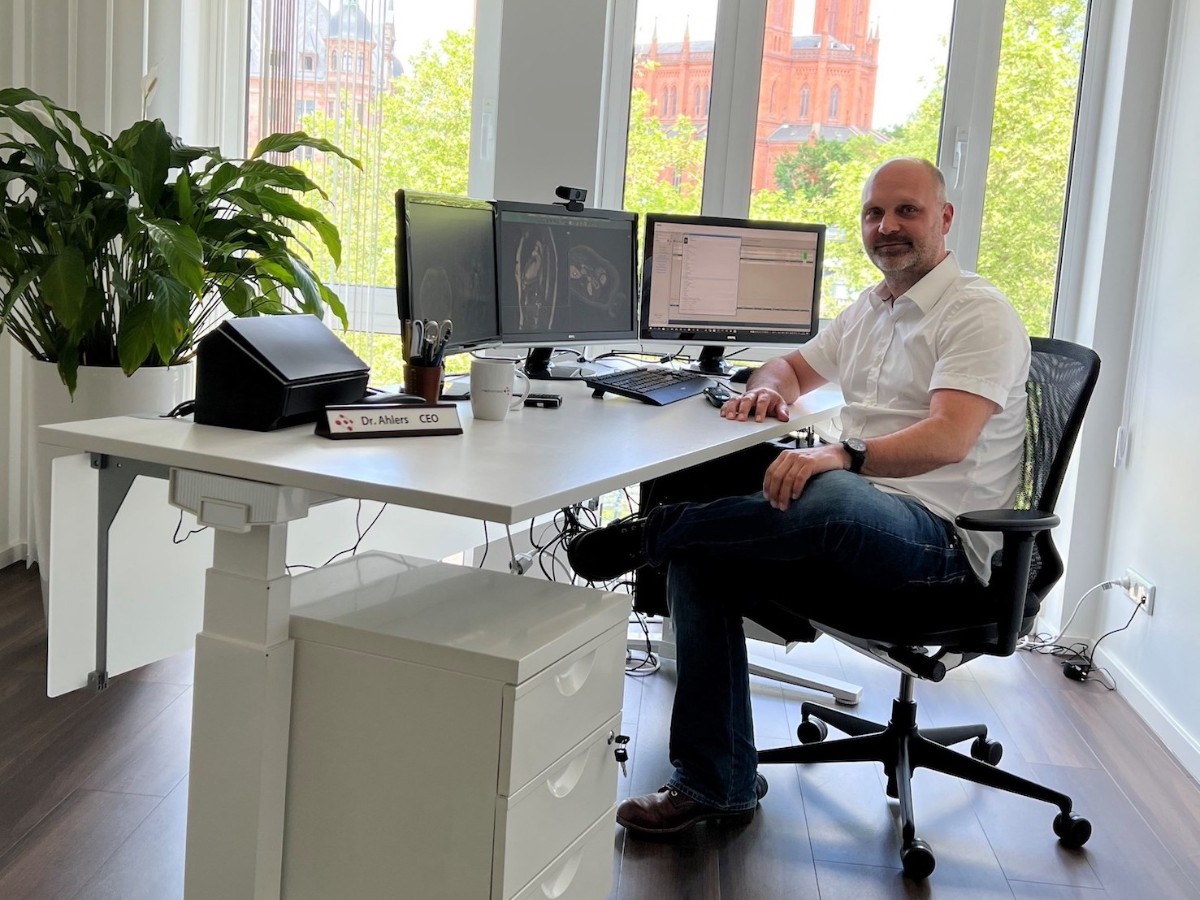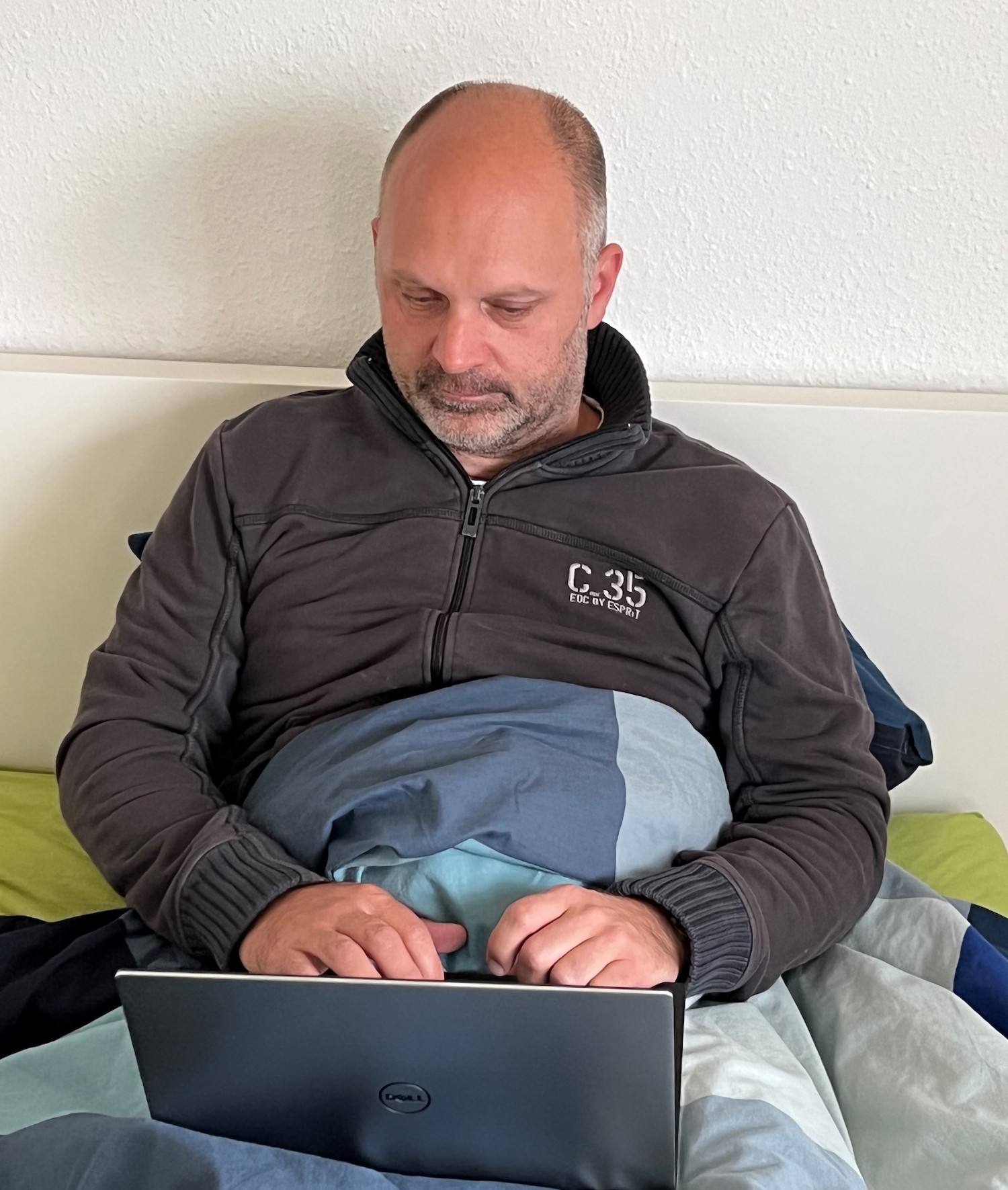Dr. Christopher Ahlers, a radiologist at Radiomed, has maneuvered through a myriad of challenges throughout the COVID-19 pandemic. As co-owner and CEO of a rapidly growing radiology and nuclear medicine practice in Wiesbaden, Germany, he’s faced delayed exams in the early months of the pandemic, which created a backlog of scans to complete while facing severe staffing shortages.
All these challenges came to a head one Monday morning in March 2022, when he was confronted with a fully booked day of cardiac magnetic resonance imaging (MRI) scans, no backup radiologist, a fever, a cough and a positive COVID-19 test result on his phone.
“I was pretty sure I had COVID, because all of my family members recently tested positive,” Ahlers says. “First it was my wife, Julia, and then my three sons, Hannes, Henry and Tom. Every day, one of us dropped into the bed. It takes a few days to get a final positive result, and I got that result the day before we had the scanning sessions.”
With 10 sites and 285 employees throughout Germany, Radiomed produces 50,000 MRI exams and roughly 80,000 cross-sectional imaging studies each year. Any downtime or disruption can have a serious ripple effect, impacting the radiology staff, patients and operations with lost time, rescheduling and delays in care.
“It was a very busy day,” he recalls. “We had five cardiac MRI exams that morning, and I’m the only one in the group who does cardiac MRI on a routine basis. There was no one else to take my place.”
Cardiac MRI exams are complex, scanning for 2D and 3D views of the heart chambers, valves and muscles, as well as their movement and blood flow. They are used to diagnose heart disease, damage and inflammation as well as other health conditions. “A cardiac MRI requires physician involvement and oversight,” says Ahlers, so he had to be present and alert that day.
“Many of our MRI exams run on auto mode, and the technicians know exactly what to do. We don’t have to interact very much with the acquisition of the exam,” he says. “In cardiac, you always need to be there. You need to always refocus the exam and reorganize the protocol depending on the question and what’s found in the images.”
Out of necessity, Dr. Ahlers knew that morning that he had to try to work remotely. “To avoid rescheduling the whole day, I needed to be there in any way, and it was the remote way.”
He and his team had installed Digital Expert Access, a real-time virtual system that enables remote team collaboration and MRI support, the day before. Although he wasn’t feeling well, he was able to remotely view scans and interact with the on-site technician from his home office. “It was the first time we clinically used that system,” says Ahlers. “I followed exams, I reviewed the possible pathologies and I interacted with the team in order to scan the optimum protocols.”
Digital Expert Access allows the remote user to adjust settings on the scanner together with an on-site technician, and to see live images. In the case of a cardiac exam, it’s important for the remote user to monitor the patient’s heart activity via an electrocardiogram (ECG) as well as the patient’s breathing. The user can also interact face-to-face with the technologist via videoconferencing to guide, train or instruct.
That day, Dr. Ahlers performed his exam schedule seamlessly. “It was pretty much the same as what we do when I’m on-site,” says Ahlers. “I usually spend a lot of time next to the techs at the scanner console, so I think they liked it.” Later, he and his family fully recovered in time to take their planned Easter holiday trip.
Radiomed’s new system for virtual collaboration was originally installed to address another issue that has intensified during the pandemic: staff shortages.
“We are currently in a very severe staff shortage, and we have a lot of personnel who are not very experienced,” says Ahlers. “Before the pandemic, a pregnant technologist was absolutely allowed to carry on working, but they are not allowed at the moment due to possible COVID exposure.”
Going forward, Dr. Ahlers expects to establish real-time virtual collaboration systems at all the Radiomed sites to allow senior personnel to assist their colleagues who have less experience, he says.
With rising demand for radiology services, staff will continue to be stretched thin. At the same time, wages and operational costs are increasing, while remuneration and reimbursements are decreasing. “There is a severe pressure in terms of productivity,” Ahlers says. “The only way for us to address these challenges is with increased productivity.”


